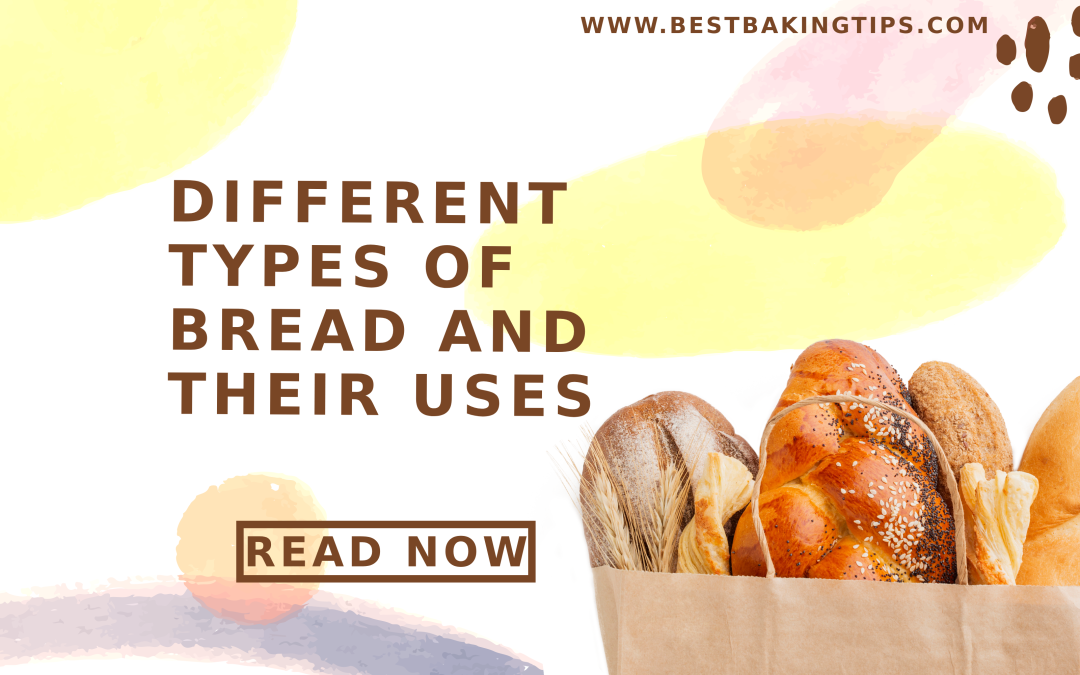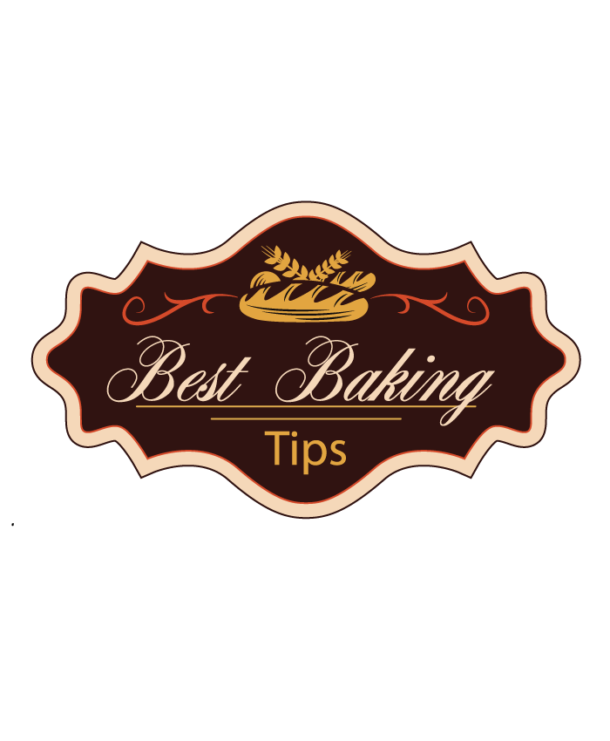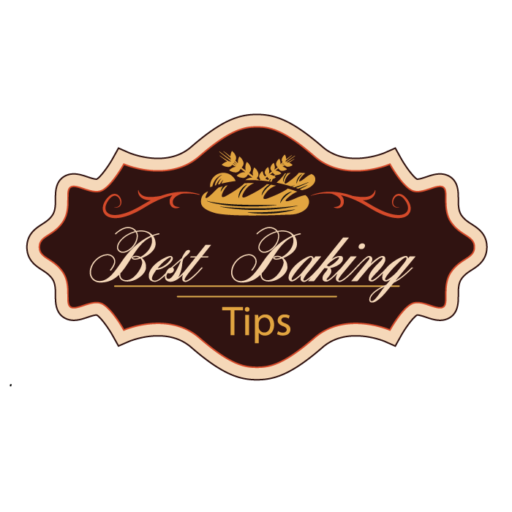==================
Affiliate Statement
Best Baking Tips is supported by our audience. When you purchase through one of our links, we may earn a small affiliate commission. As an Amazon Associate I earn from qualifying purchases. Your cost is not affected.
==================
The world of baking is vast and diverse, with a myriad of techniques, ingredients, and recipes that have evolved over time and across cultures. At the heart of this culinary universe lies bread, a staple food that people enjoy in various forms throughout the world. This article aims to provide a comprehensive guide to different types of bread.
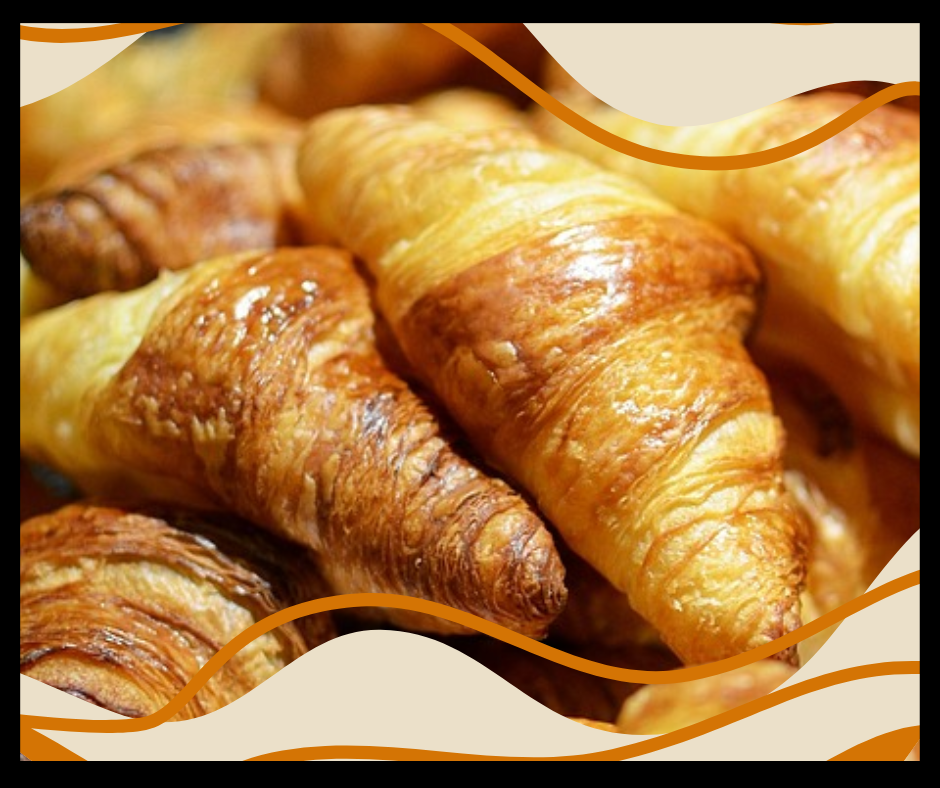
We’ll look at their unique characteristics, techniques, and ingredients. By exploring bread’s rich history and significance in global cuisine, readers will gain a deeper understanding of this versatile staple’s many forms and uses.
The Significance of Bread in Global Cuisine

Bread has long been a crucial aspect of human diets and culture, dating back to ancient civilizations. As a readily available source of carbohydrates, bread is used as sustenance in various regions of the world, including Europe, Africa, and the Middle East.
Over time, different cultures have developed their own unique bread recipes, reflecting the local ingredients and tastes. As a result, bread has come to symbolize community, tradition, and the sharing of food.
Important Food Nutrition and Value
In addition to its nutritional value, bread is also significant as a symbol of hospitality and friendship. Offering bread to guests is a common practice in many cultures, demonstrating a host’s generosity and care.
They often pair bread with other foods, such as cheese, meats, or spreads, to create a satisfying meal. The versatility of bread has allowed it to adapt and evolve, resulting in the diverse array of bread types available today.
Different Types of Bread: an Overview
We found countless different types of bread in our search. And each possesses unique characteristics, flavors, and textures. Some of the most popular kinds of bread include:
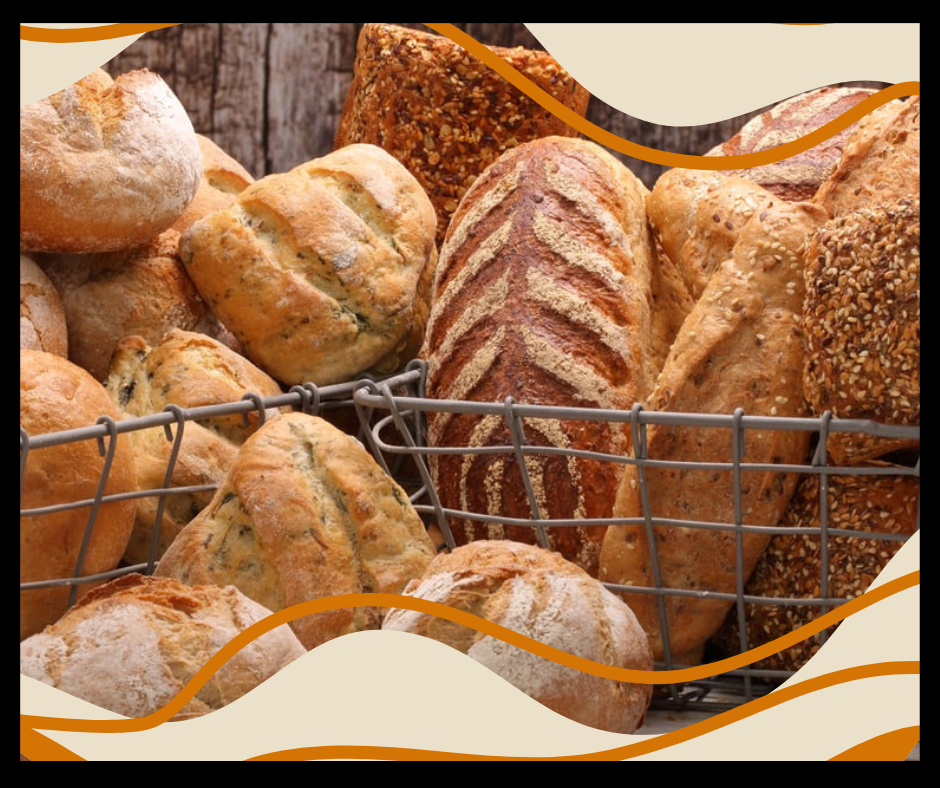
Baguette
Originating in France, the baguette is a long, thin loaf with a crisp crust and a soft, airy interior. They often use it for sandwiches, served with cheese or spread with butter.
Sourdough
Sourdough bread is made using a fermented dough with a distinct tangy flavor and a chewy texture. You can use it for toast or sandwiches and is particularly popular in artisan bakeries.
Ciabatta
An Italian bread characterized by its porous, chewy texture, ciabatta is often used for sandwiches or as a base for bruschetta.
Rye bread
Made using rye flour, this type of bread has a dense texture and a slightly sour taste. You can use it in sandwiches, particularly those featuring strong flavors such as smoked meats and pickles.
Pita
A round flatbread originating in the Middle East, you can use pita to scoop up dips such as hummus or fill it with ingredients to create a sandwich.
Naan
A soft, leavened flatbread originating in India, naan is typically served alongside curries or used to pick up food.
Just a Sampling
These are just a few examples of the many different types of bread available worldwide. Each type has its unique characteristics, making them suitable for various dishes and occasions.
Understanding the Ingredients and Techniques Behind Bread Variations
The vast array of bread types came from the different ingredients and techniques used in their preparation. The primary ingredients in most bread recipes include flour, water, yeast, and salt. However, different types of bread may also contain additional ingredients, such as sugar, milk, butter, or seeds.
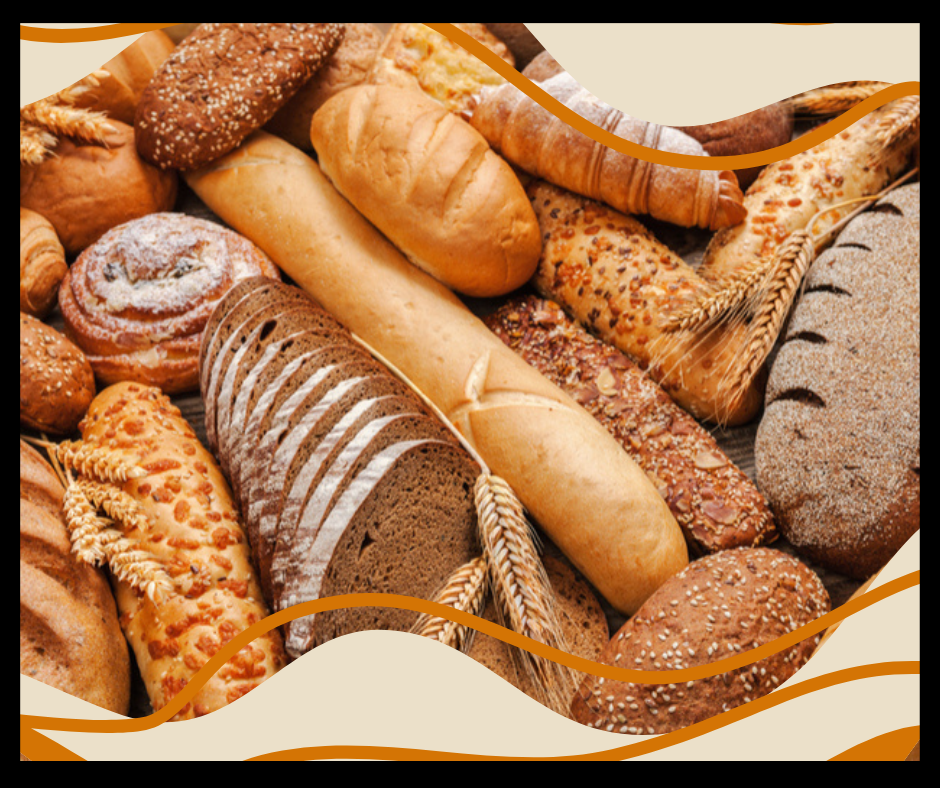
Not Just White Flour
The type of flour used in a bread recipe can significantly impact the final product’s flavor and texture. For example, whole wheat flour creates a denser, more robust loaf, while bread made with all-purpose flour is lighter and airier.
You can also combine different types of flour to create unique bread recipes, such as rye bread, which often includes a mixture of rye and wheat flour.
Flourless Bread
Many find it surprising that some bread contains no actual flour. It’s true. Flourless bread, such as Ezekial bread, uses ground sprouts rather than flour. Many believe this provides better nutrition, especially for those who need to eat less or no wheat flour products.
How Bakers Create, The Technique
The technique also plays a crucial role in determining the characteristics of different types of bread. The kneading process develops gluten, which provides structure and elasticity to the dough. The amount of kneading required varies depending on the desired texture of the bread.
Additionally, fermentation and proofing times can impact the flavor and texture of the final loaf. Some types of bread, such as sourdough, require a longer fermentation period, which results in a more complex flavor profile.
Types of Bread Rolls and Their Uses
Bread rolls are smaller, individual portions of bread that come in many varieties, each suited to specific uses. Some popular types of bread rolls include:
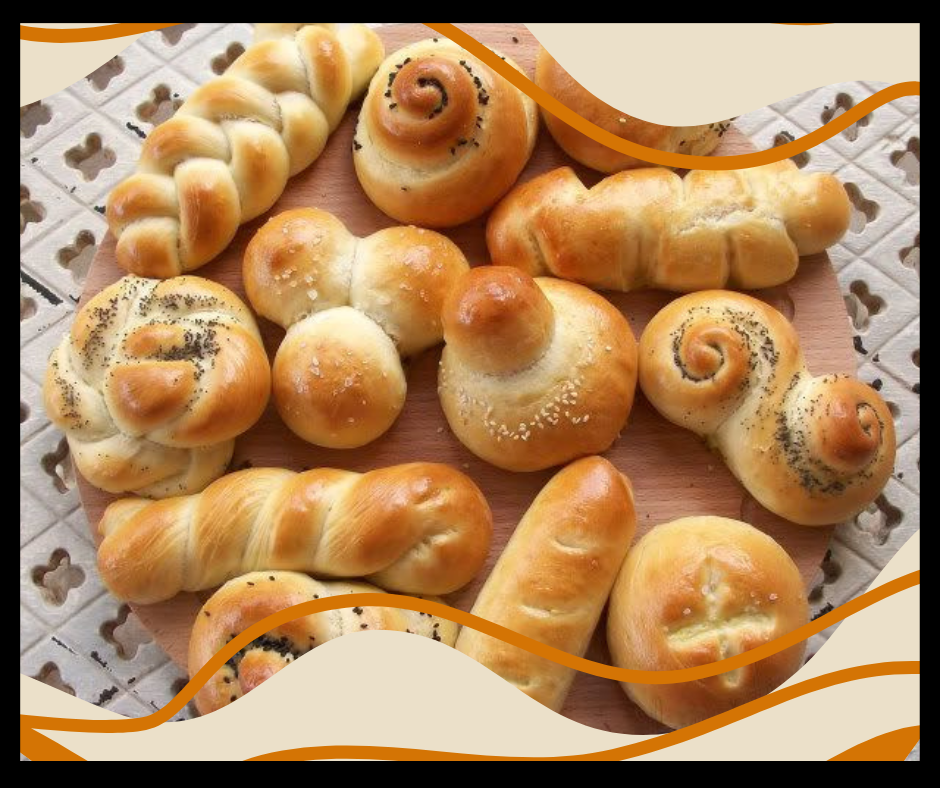
Dinner Rolls
Soft, fluffy rolls are typically served alongside a meal and are often used to sop up sauces or gravies.
Kaiser Rolls
A round, crusty roll with a slightly chewy texture, often used for sandwiches.
Pretzel Rolls
Made with a dough similar to that of a pretzel, these rolls have a chewy texture and a distinctive flavor, making them suitable for sandwiches or as a snack on their own.
Slider Rolls
Small, soft rolls are used for making miniature sandwiches, or “sliders.”
Brioche Rolls
A rich, buttery roll with a tender crumb, you can use brioche rolls for gourmet sandwiches or served with spreads.
Understanding the characteristics of various bread rolls allows for selecting the most suitable roll for a particular dish or occasion.
Types of Bread Loaves: a Closer Look
Bread loaves are larger than rolls and can be sliced to serve. There are numerous types of bread loaves, each with its unique characteristics. Some popular types of bread loaves include:

-
Multigrain loaf
This loaf is flavorful and nutritious and made with different grains and seeds. It is often used for sandwiches or toast.
-
Challah
A braided, slightly sweet loaf that is often used for French toast or bread pudding due to its richness and texture.
-
Focaccia
An Italian flatbread that is typically topped with herbs, olives, or other ingredients, focaccia is often served as an appetizer or used for sandwiches.
-
Irish soda bread
This bread is typically enjoyed with butter and jam or served alongside a meal, a dense, hearty loaf made with baking soda as a leavening agent instead of yeast.
-
Monkey bread
Monkey bread is a sweet, sticky, pull-apart bread that is often served for breakfast or as a dessert. It is made with a simple dough that is rolled out and cut into small pieces. The pieces are then coated in a mixture of cinnamon, sugar, and butter and baked in a bundt pan. The result is a delicious and gooey treat that is sure to please everyone.
Monkey bread is a fun and easy dish to make. It can be made ahead of time and baked later or made right before serving. Monkey bread is also a great dish to make for a party or potluck.
It is sure to be a hit with everyone who tries it. Other names for Monkey bread include:
-
Pull-apart bread
-
Pluck-it cake
-
Bubble bread
-
Hungarian coffee cake
-
Christmas delights
-
Sticky bread
-
Monkey Puzzle Bread
By familiarizing oneself with the different types of bread loaves and their characteristics, one can select the most appropriate loaf for a particular dish or occasion.
Popular Sandwich Breads and Their Characteristics
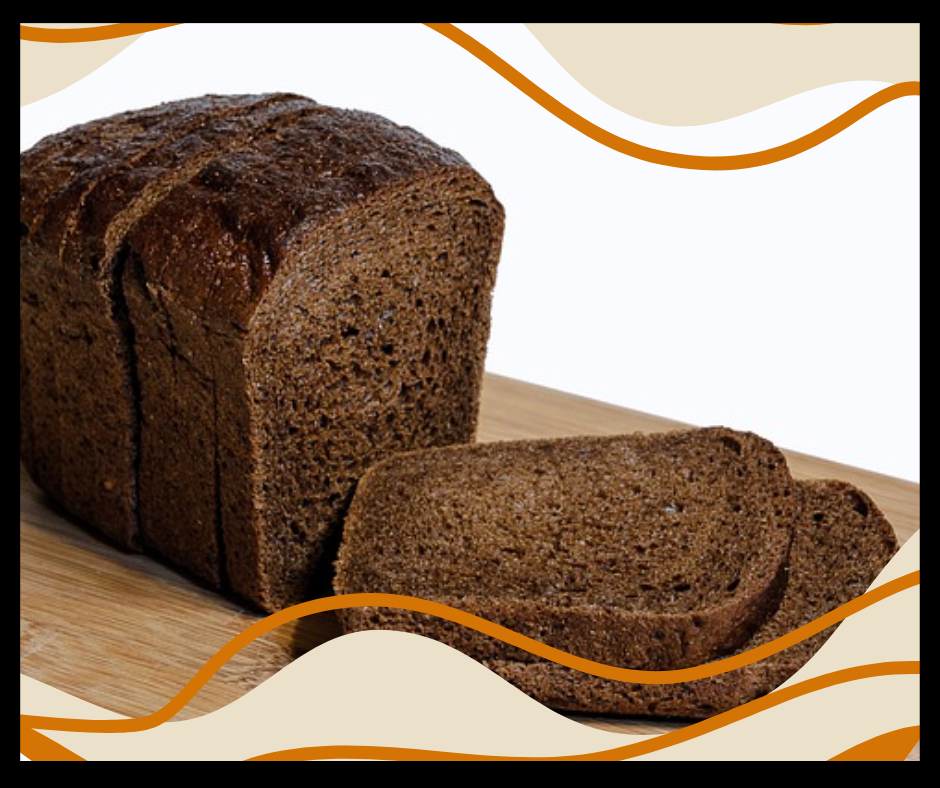
Certain types of bread are particularly well-suited for making sandwiches, providing the perfect balance of flavor, texture, and structure to hold the sandwich ingredients together. Some popular sandwich bread types include:
- White bread: A soft, slightly sweet bread that is versatile and widely used for a variety of sandwiches.
- Wheat bread: A more robust and nutritious option than white bread, wheat bread is often used for sandwiches containing heartier ingredients. Note that many recipes incorporate white flour and wheat flour when making wheat bread. It is possible to make the bread entirely with wheat flour.
- Rye bread: With its dense texture and slightly sour taste, rye bread is ideal for sandwiches featuring strong flavors such as corned beef or pastrami.
- Sourdough: The tangy flavor and chewy texture of sourdough make it a popular choice for sandwiches, particularly those with bold ingredients like strong cheeses or cured meats.
Understanding the characteristics of various sandwich bread types allows for the selection of the best bread for a particular sandwich creation.
Choosing the Best Bread for Your Sandwich
When selecting the type of bread for a sandwich, it is essential to consider the sandwich’s ingredients and the desired flavor and texture profile. For example, a rich, buttery brioche roll may be ideal for a gourmet sandwich featuring luxurious ingredients such as smoked salmon or brie cheese. In contrast, a more neutral white bread might be better suited for a simple ham and cheese sandwich.
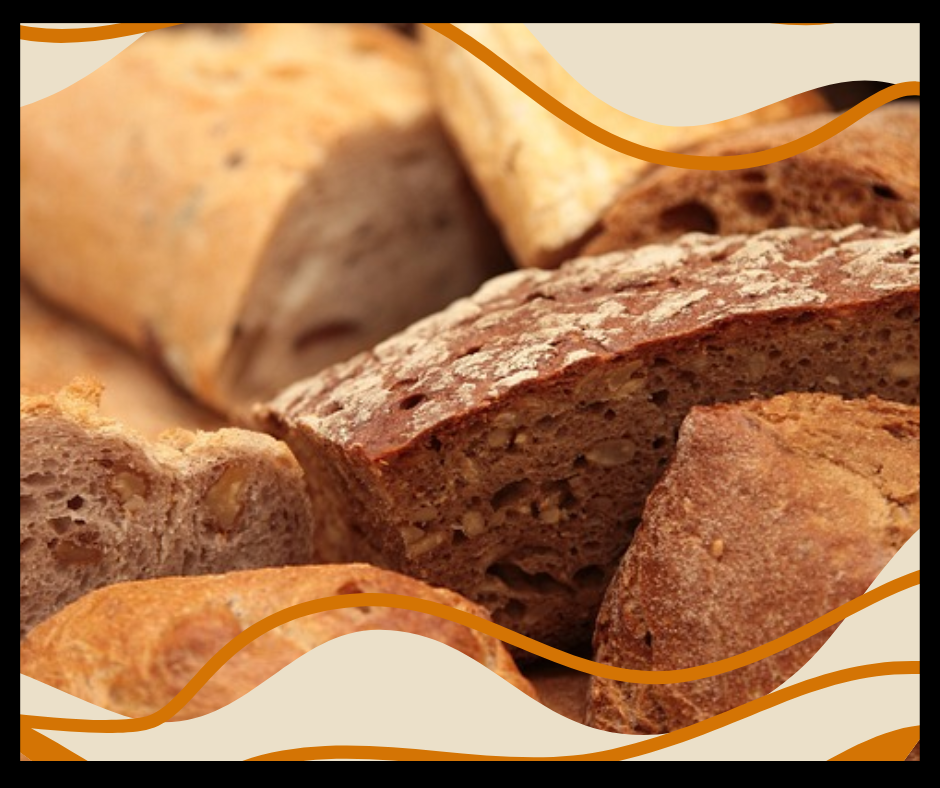
Additionally, the bread’s texture should complement the sandwich ingredients, providing the appropriate level of structure and stability. A crusty baguette may be ideal for a sandwich with hearty ingredients, while a soft, pillowy dinner roll may be better suited for a delicate sandwich filled with thinly sliced cucumber and cream cheese.
You can create perfectly balanced and delicious sandwiches by considering the unique characteristics of various bread types.
Exploring Different Types of Bread Recipes
Once familiar with the many different types of bread and their characteristics, it can be both fun and rewarding to explore various bread recipes. The possibilities are virtually endless, from traditional recipes, such as French baguettes or Italian ciabatta, to more unique creations like chocolate chip bread or jalapeño cheese bread.
Experimenting with different types of bread recipes allows for the opportunity to discover new favorite bread types and expand one’s culinary horizons. Additionally, one can develop and refine their bread-baking skills by trying new recipes, resulting in more consistently delicious and impressive loaves.
Bread Pudding
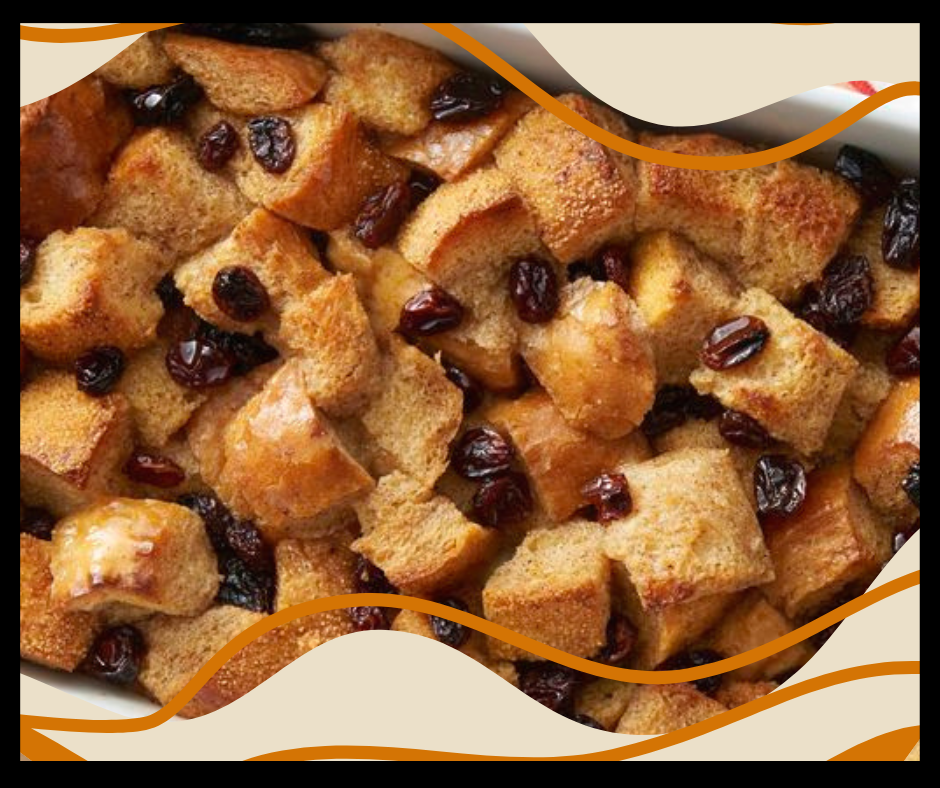
Bread pudding is a dessert made with stale bread, milk, eggs, sugar, and spices. It is a popular dish in many countries, and there are many different variations of the recipe. Many enjoy it with vanilla ice cream.
The basic ingredients for bread pudding are stale bread, milk, eggs, sugar, and spices. The bread is typically made into bread cubes or torn into small pieces and soaked in milk.
The eggs, sugar, and spices are then beaten together and poured over the bread. The mixture is then baked in a dish until it is golden brown and set.
Bread pudding can be served plain or with a variety of toppings, such as whipped cream, ice cream, or fruit. It is often served warm but can also be served at room temperature.
A versatile dish, bread pudding is enjoyed for breakfast, lunch, or dinner. It is a great way to use up stale bread, and it is a delicious and comforting dessert.
Types of Bread for Making the Bread Pudding Mixture
There are many different types of bread that can be used to make bread pudding, but the best bread for bread pudding is slightly stale. Stale bread is absorbent and will soak up the custard mixture without becoming soggy.
Some good options for traditional bread pudding include:
-
Challah
Challah is a sweet, egg-rich bread that is perfect for bread pudding. It has a soft, fluffy texture that will soak up the custard mixture and become light and fluffy.
-
Brioche
Brioche is another sweet, egg-rich bread that is perfect for bread pudding. It has a buttery,rich flavor that will add depth to the bread pudding.
-
French Bread
Most of us know French bread as a base for garlic bread. And indeed, French bread is a sturdy bread that holds up well to the custard mixture. It offers a chewy texture that will add a bit of texture to the bread pudding.
-
Sourdough Bread
Sourdough bread has a tangy flavor that will add depth to the bread pudding. It has a chewy texture that will add a bit of texture to the bread pudding.
When choosing bread for bread pudding, it is important to avoid bread that is too dry or too soft. Dry bread will not absorb the custard mixture and will become hard, while soft bread will become soggy.
How to Make Bread Pudding Mixture Without Stale Bread
Here are a few options for making bread pudding if you don’t have stale bread:
- Use fresh bread: You can use fresh bread, but you will need to dry it out first. Preheat your oven to 200 degrees Fahrenheit and place the bread on a baking sheet. Bake for 10-15 minutes or until the bread is dry and slightly golden brown.
- Use a bread machine: If you have a bread machine, you can use the “dry bread” setting to dry out fresh bread. This will take about 30 minutes.
- Use a toaster: You can also use a toaster to dry out fresh bread. Simply toast the bread until it is dry and slightly golden brown.
Can I Make Vegan Bread Pudding?
Yes! In fact, vegan bread pudding comes together in the same manner as traditional bread pudding. Simply replace the dairy milk with soy milk or another plant-based milk.
Some prefer coconut milk for the richness it provides. Use a suitable vegan egg substitute such as aquafaba or flax eggs in place of the eggs.
Bread-Baking Tips and Tricks for Success
To ensure success when baking different types of bread, it is essential to follow some key tips and tricks:
- Use quality ingredients: High-quality ingredients, such as unbleached, all-purpose flour and fresh yeast, will result in a superior final product.
- Measure accurately: Particularly when working with yeast, measuring ingredients accurately to achieve the desired rise and texture is essential.
- Baking Dish or pan: Use the right size baking dish or bread pan for your loaf. Too large a pan results in a flatter loaf as it spreads. Too small, and your loaf may expand beyond the pan.
- Be patient: Allow ample time for the dough to rise and proof, as rushing this process can result in a dense, poorly risen loaf.
- Preheat the oven: Ensure the oven is preheated to the correct temperature before baking, as this will ensure even cooking and a properly risen loaf.
- Cool before slicing: Allow the bread to cool slightly before slicing, as this will help to maintain its structure and prevent it from becoming too dense.
By following these tips and tricks, one can achieve consistently delicious and successful bread creations, regardless of the type of bread being baked.
How Do I Make Vegan Bread?
Here are some tips for making vegan bread:
- Use high-quality vegan butter. This helps to give your bread a rich flavor and a light texture.
- Use unsweetened soy milk, almond milk, or other plant-based liquid. This helps to keep your bread moist and flavorful.
- Don’t overmix the batter. Overmixing can make your bread tough.
- Bake the bread until it is golden brown, and a toothpick inserted into the center comes out clean.
- Let the bread cool completely before slicing and serving.
With these tips, you’ll be able to make delicious vegan bread that everyone will love!
Conclusion and The Future of Bread-Making
The world of baking is vast and diverse, with countless different types of bread enjoyed around the globe. By understanding the unique characteristics, ingredients, and techniques associated with various bread types, one can select the most appropriate bread for a particular dish or occasion and create delicious, balanced sandwiches.
As the culinary world continues to evolve, new and exciting bread types and recipes will undoubtedly emerge, offering even more opportunities for exploration and enjoyment. Happy baking!
Fun Facts About Bread:
- Bread has been around for thousands of years. The earliest evidence of bread-making dates back to 14,500 years ago in Jordan.
- Bread is a staple food in many cultures around the world. It is a good source of carbohydrates, protein, and fiber.
- There are many different types of bread, including white bread, whole wheat bread, rye bread, sourdough bread, and multigrain bread.
- You can make bread with various ingredients, including flour, water, yeast, salt, and other flavorings.
- Bread is typically baked in an oven but can also be cooked on a griddle or in a pan. Try it on your outdoor grill to keep the heat out of the kitchen!
- You can eat bread plain or use it to make sandwiches, toast, and other dishes.
- Bread is a versatile food that can be enjoyed in many different ways.
Here are Some Additional Facts About Bread:
- The average American consumes about 53 pounds of bread per year.
- The United States is the world’s largest wheat producer, the main ingredient in most bread.
- China is the world’s largest bread producer, followed by the United States, India, and Germany.
- Bread is a symbol of many different things, including nourishment, sustenance, and community.
- People use bread in religious ceremonies and rituals for centuries.
- Bread is a popular subject of art and literature.
I hope you found these facts about bread interesting!
Wondering if Every Country Enjoys Baking and Eating Bread?
Actually, no, not everyone eats bread in every country of the world. Here are a few reasons why:
- Some countries do not have the resources to grow wheat. Wheat is the main ingredient in bread, so countries that do not have the resources to grow wheat will not be able to produce bread.
- Some countries have a different staple food. For example, rice is a staple food in many Asian countries, so bread is not as common in these countries.
- Some countries have a religious or cultural tradition prohibiting bread consumption. For example, the Hindu religion prohibits the consumption of wheat products, so no one eats bread in India.
However, bread is eaten in the majority of countries in the world. It is a staple food in many cultures and people of all ages.
Here are Some Examples of Breads That are Eaten in Different Countries Around the World:
- In China, steamed buns are a popular type of bread. These buns are made with a dough that is steamed instead of baked.
- In India, roti is a popular type of flatbread. This bread is made with whole wheat flour and is cooked on a hot griddle.
- In Italy, focaccia is a popular type of flatbread. This bread is made with olive oil, garlic, and herbs.
- In France, baguettes are a popular type of bread. These loaves of bread are long and thin and are made with white flour.
- In Germany, pretzels are a popular type of bread. These pretzels are made with a dough that is boiled and then baked.
These are just a few examples of the many different types of bread eaten worldwide. Bread is a versatile food that can be enjoyed in many different ways.
FAQs
1. What is whole wheat bread best for?
Whole wheat bread is ideal for sandwiches and toasts, offering a nutty flavor and rich fiber.
2. Can I use sourdough for anything other than sandwiches?
Yes, sourdough is great for bruschetta, garlic bread, and as a hearty soup accompaniment.
3. Is rye bread good for health?
Rye bread is healthy, rich in fiber, and perfect for a balanced diet.
4. What kind of bread is best for sweet dishes?
Brioche is excellent for sweet dishes like French toast due to its buttery and light texture.
5. Can I use baguettes for something other than sandwiches?
Baguettes are versatile; use them for crostini, garlic bread, or simply as table bread.
Let’s Bake Together!
Uncover the magic of baking at its finest!
Follow us on Facebook, Instagram, and Twitter for mouthwatering images, recipe reviews, and an enthusiastic community that celebrates the delight of baking.
Facebook: https://www.facebook.com/bestbakingtip
Instagram: https://www.facebook.com/bestbakingtip
Twitter: https://twitter.com/bestbakingtips
Let’s create sweet wonders together!

